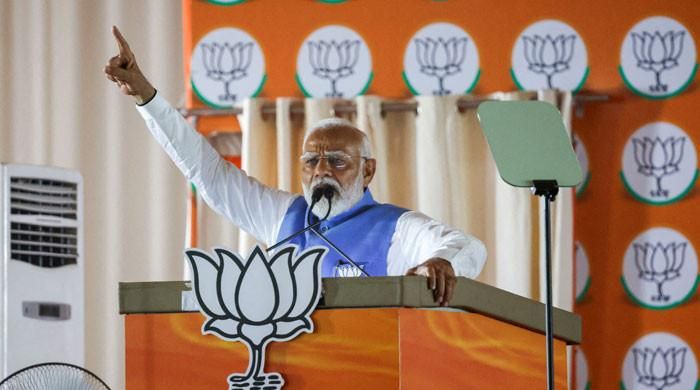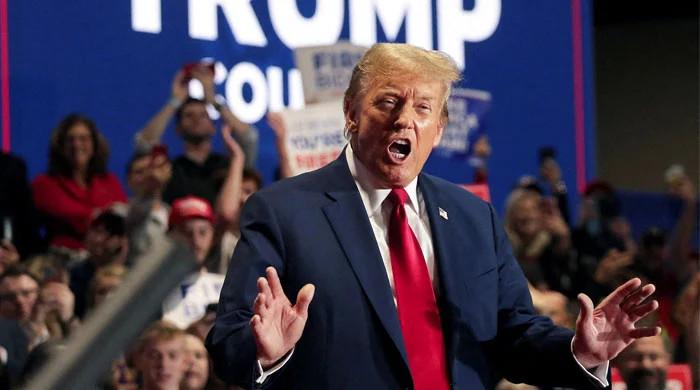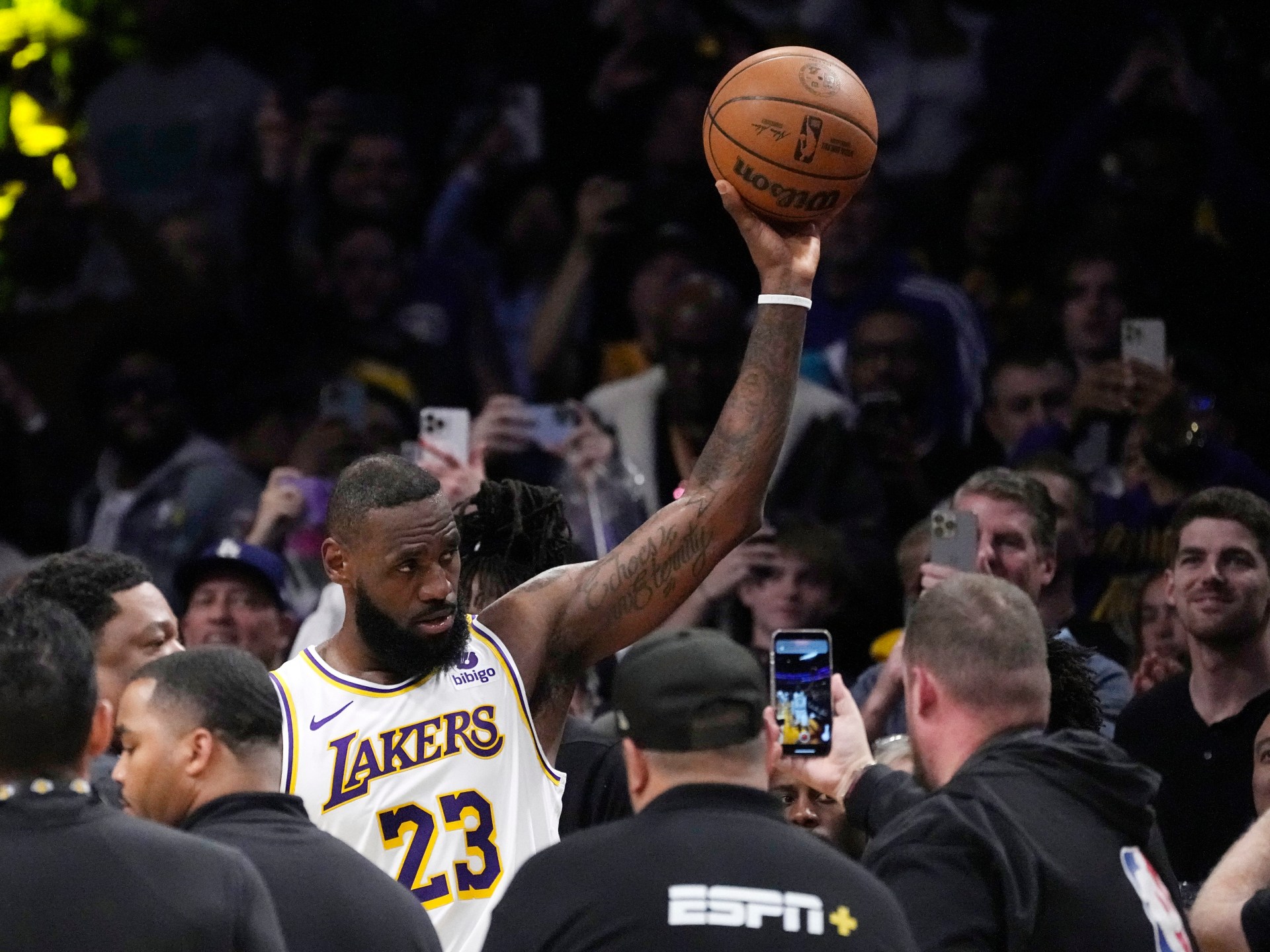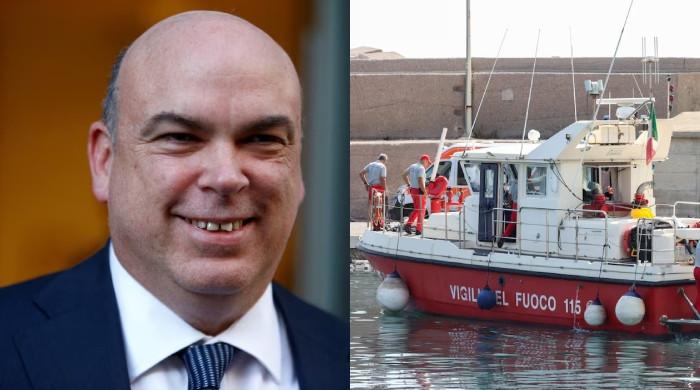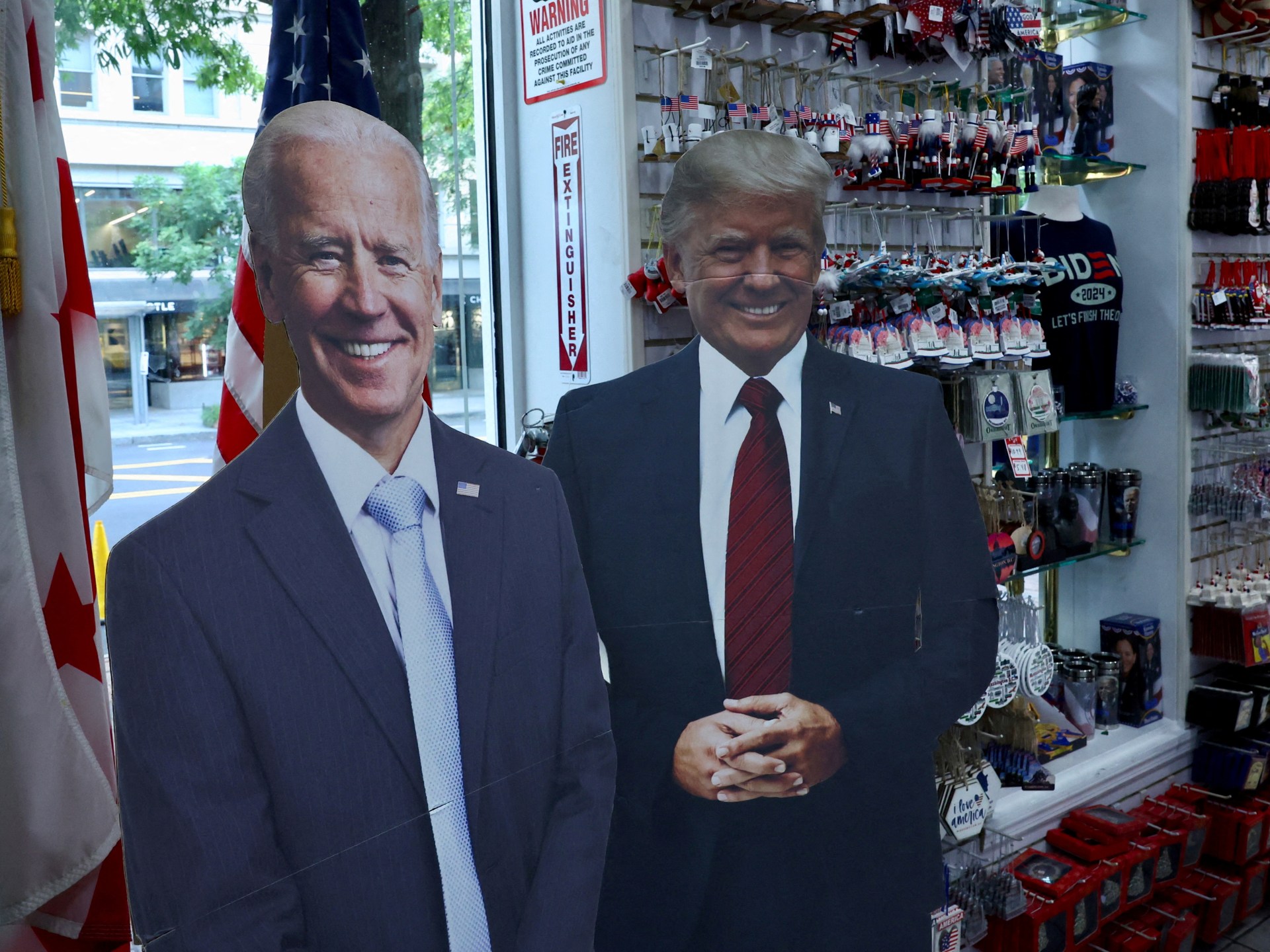- Exit polls have shown that Prime Minister Modi is well on his way to victory.
- The count began at 8 in the morning and results are expected in a few hours.
- Early unstable trends unsettled markets and stocks fell.
Indian Prime Minister Narendra Modi's alliance reached a majority in early vote count trends in Tuesday's general election, but the numbers fell well short of the overwhelming majority predicted in exit polls, data showed. TV channels.
The first swinging trends unsettled the markets and stocks fell sharply. The rupee also fell against the dollar and benchmark bond yields rose.
Markets had soared on Monday after exit polls on June 1 projected that Modi and his Bharatiya Janata Party (BJP) would record a big victory, and that his National Democratic Alliance (NDA) would win a majority of two thirds or more.
At 0430 GMT, television channels showed that the NDA was ahead in almost 300 of the 543 elective seats in parliament, a simple majority, in the initial count. The opposition alliance INDIA, led by Rahul Gandhi's Congress Party, was leading with more than 200 seats, more than expected.
At that time only 10% to 15% of the total votes had been counted, the television channels said.
The BJP alone accounted for nearly 250 of the seats in which the NDA led, compared to the 303 it won in 2019. Trends also showed Modi leading first, then lagging behind, and leading again in his seat in the Hindu holy city of Varanasi. .
The first votes counted were mail-in votes, which are paper votes, mostly cast by troops serving outside their home congressional districts or officials away from home on election duty.
This year, voting by mail was also offered to voters over 85 years of age and people with disabilities so that they could vote from home.
The counting is expected to last several hours as the vast majority of votes obtained on electronic voting machines or EVMs are done after the first 30 minutes of counting postal votes.
“These are very early trends, we will see better results as the day progresses,” Congress spokesperson Pawan Khera said.
Exit polls broadcast on television after the election ended on June 1 projected a big victory for Modi, but exit polls have often gotten election results wrong in India. Nearly a billion people were registered to vote, of whom 642 million turned out.
Vitriolic campaign
However, if Modi's victory is confirmed, his BJP will have triumphed in a vitriolic campaign in which the parties accused each other of religious bias and posing a threat to sections of the population.
Investors have already cheered the prospects of another Modi term, hoping it will deliver more years of strong economic growth and business-friendly reforms, while a possible two-thirds majority in parliament could allow major changes to the constitution, rivals fear. and critics.
“The main task of the next government will be to put India on the path to getting rich before it grows old,” the Times of India newspaper said in an editorial on Tuesday, referring to the young working-age population in the world's most populous nation. . “Time flies”.
Exit polls projected that the BJP-led National Democratic Alliance could win a two-thirds majority in the Lok Sabha, the lower house of parliament, which would help it introduce far-reaching amendments to the constitution.
Markets applauded the projections as they promised a continuation of the ruling alliance's growth-focused economic policies.
Nearly one billion people were eligible to vote in the seven-phase, seven-week vote that began April 19 and took place amid scorching summer heat with temperatures reaching nearly 50°C (122° Fahrenheit). in some parts.
More than 66% of registered voters went to the polls, just one percentage point lower than the previous election in 2019, quelling pre-election concerns that voters could avoid a race that was thought to be a conclusion. inevitable in favor of Modi.
Modi, 73, who first came to power in 2014 promising growth and change, seeks to become only the second prime minister after India's independence leader Jawaharlal Nehru to win three consecutive terms.
He began his campaign by showcasing his record in office, including economic growth, welfare policies, national pride, Hindu nationalism, and his own personal commitment to fulfilling promises he called the “Modi Guarantee.”
However, he changed course after low voter turnout in the first phase and accused the opposition, especially the Congress Party, which leads an alliance of two dozen groups, of favoring India's 200 million Muslims. a change that analysts said made the campaign rude and divisive.
They said the pivot could have been aimed at energizing the Hindu nationalist base of Modi's BJP to entice them to vote. Modi defended himself against criticism that he was stoking divisions between Hindus and Muslims to win votes and said he was only criticizing the opposition campaign.
The opposition alliance INDIA denied favoring Muslims in the Hindu-majority country and said Modi would destroy the constitution if he returned to power and ended affirmative action enjoyed by so-called backward castes. The BJP rejects it.

